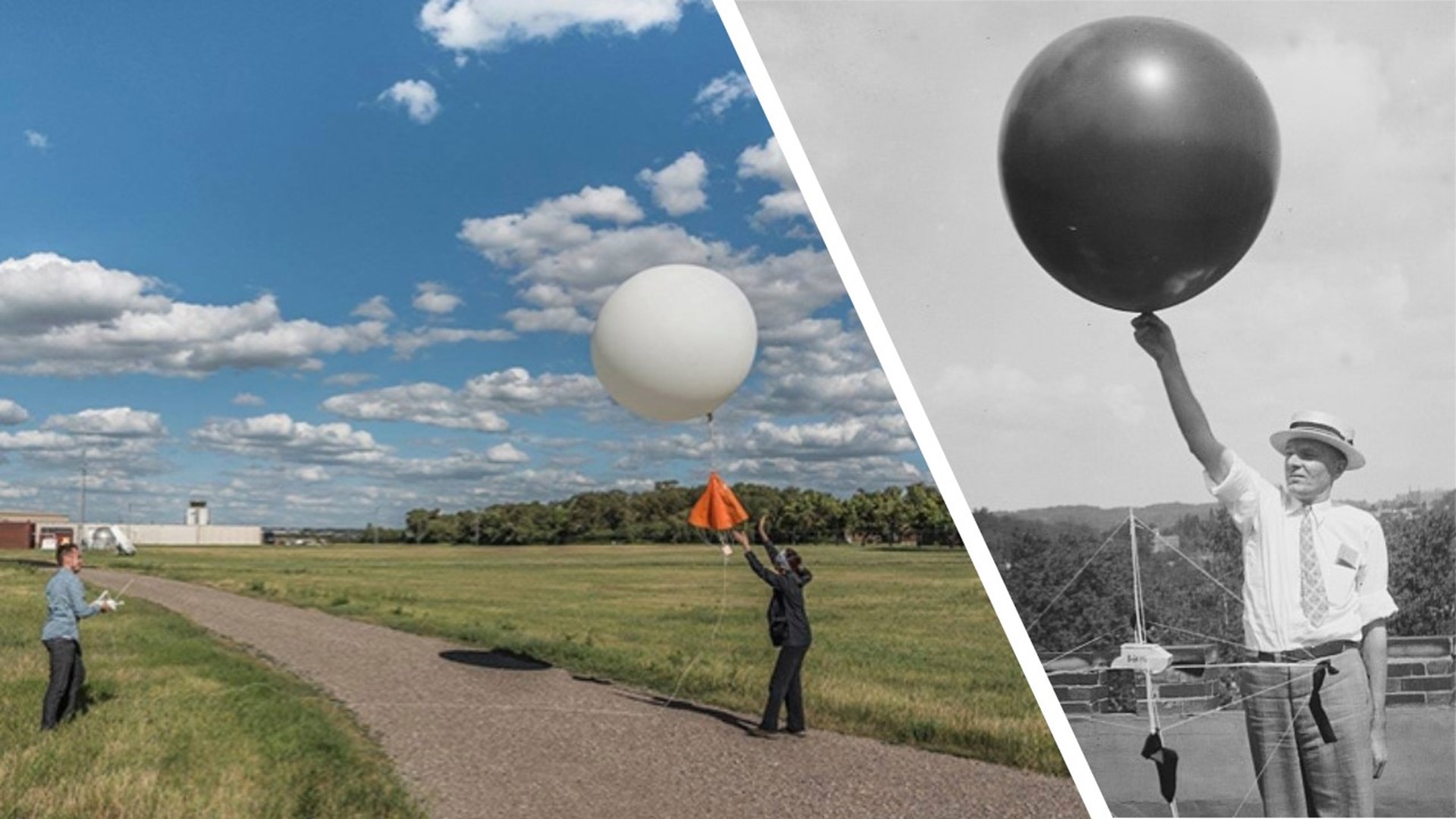CHARLOTTE, N.C. — Many of the forecast products meteorologists use everyday are high tech: satellites that circle the Earth, dual-pol radar, and powerful computers to run weather models. But one of the most important tools we use to forecast the weather starts with a balloon.
What happens during a launch?
As the balloon rises through the troposphere, the layer of the atmosphere where all weather occurs, it can expand about 4 times its size. This is due to decreased air pressure the further it goes. In fact, sometimes the balloon can rise so high that it flattens – looking more like an ellipse than a sphere.
The trip can be pretty long – sometimes floating for more than 2 hours. Weather balloons can reach insane heights, upwards of 130,000 feet about sea level. To give some perspective, the average commercial flight is around 30,000 feet. This puts some balloons into the stratosphere, the second layer of the Earth’s atmosphere
Upper-air data is important year-round in the Carolinas but it's especially critical during winter weather and severe weather.

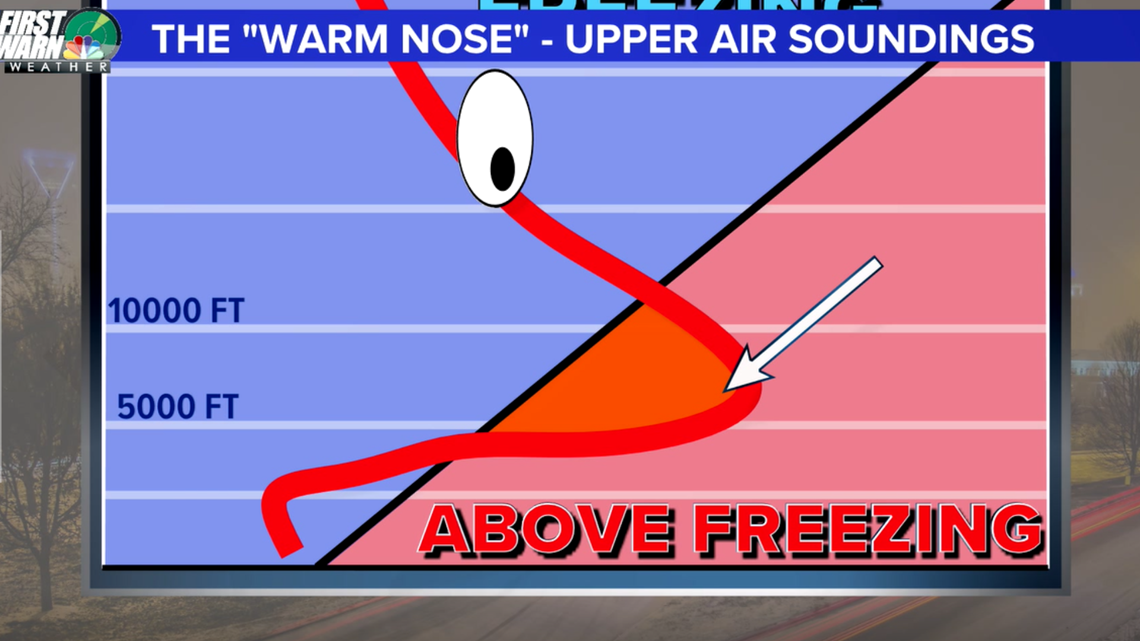
During winter weather coverage in early 2022, you may have heard the WCNC Weather Team mention the importance of a warm nose. A warm nose – or warm air in the middle layers of the atmosphere – can determine whether Charlotte will experience snow or ice. Additionally, how shallow or deep this level is can distinguish the threat for sleet versus freezing rain.
This warm layer in the atmosphere was given the name "warm nose" because when the weather balloon data is plotted on a line graph, known as a skew-t log-p diagram, it sticks out like a nose on someone's face.
Since all precipitation starts as snow in the upper atmosphere and then melts when it encounters warm air, a warm nose can be the difference between snow and rain.

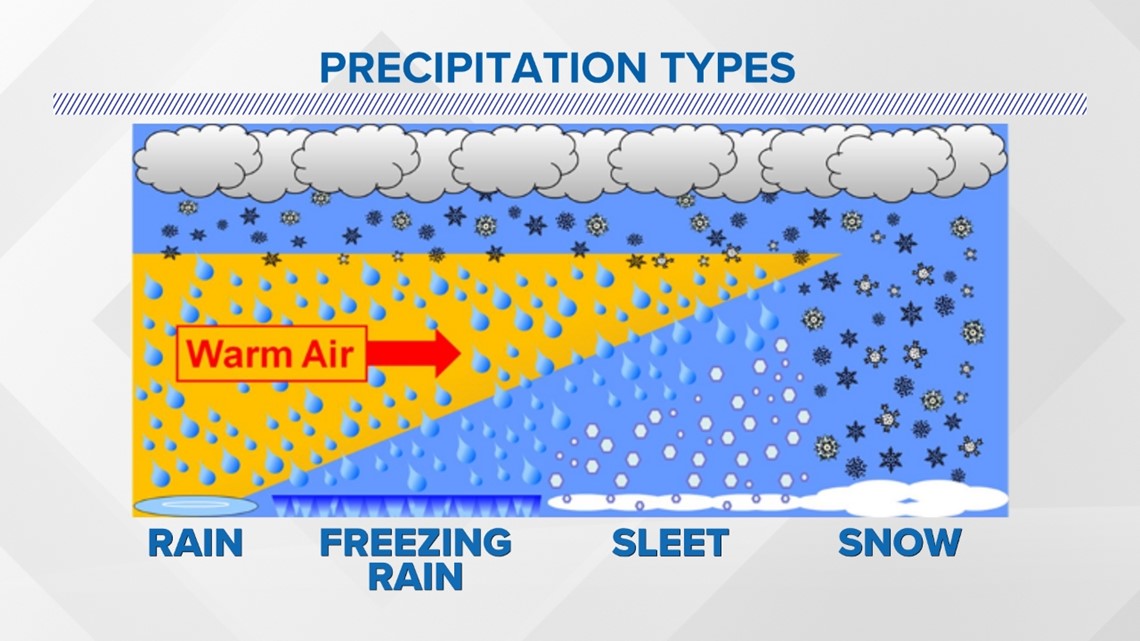
During a severe weather event, forecasters are typically looking for SLIM, an abbreviation of wind shear, lift, instability, and moisture. All of this can be determined by surface observations combined with upper-air observations from weather balloons.
Wind shear refers to how the wind speed and direction change with atmospheric altitude. This can help forecasters determine the threat for rotating thunderstorms and tornadoes.
Eventually, the weather balloon will pop and the parachute, string, and radiosonde land back on the Earth surface. All items used in a launch are biodegradable except for the radiosonde, which if found, can be returned to the National Weather Service.
What is a weather balloon and who launches them?
Every day, weather balloons are launched from over 900 sites around the world. In the United States, upper-air sites from NOAA's National Weather Service (NWS) are responsible for 92 balloon launches. The NWS has launched balloons since the 1930s.
Launches happen once in the morning and once in the evening simultaneously across the country. This methodology allows for more accurate readings and data comparsion.
Special balloon launches can be requested for big weather events, such as hurricanes, severe weather, and winter storms.
Launching in bad weather can be challenging.
“When the balloon goes, it is yanked out of your hand," Trisha Palmer, the Warning Coordination Meteorologist for the National Weather Service in Greenville-Spartanburg, explained. "You cannot take the chance of the radiosonde hitting the ground. So you have to run with the balloon!”
Palmer, whose division of the National Weather Service covers Charlotte, also explained, “You also have to make sure it doesn’t hit a tree or even the inflation shelter.”

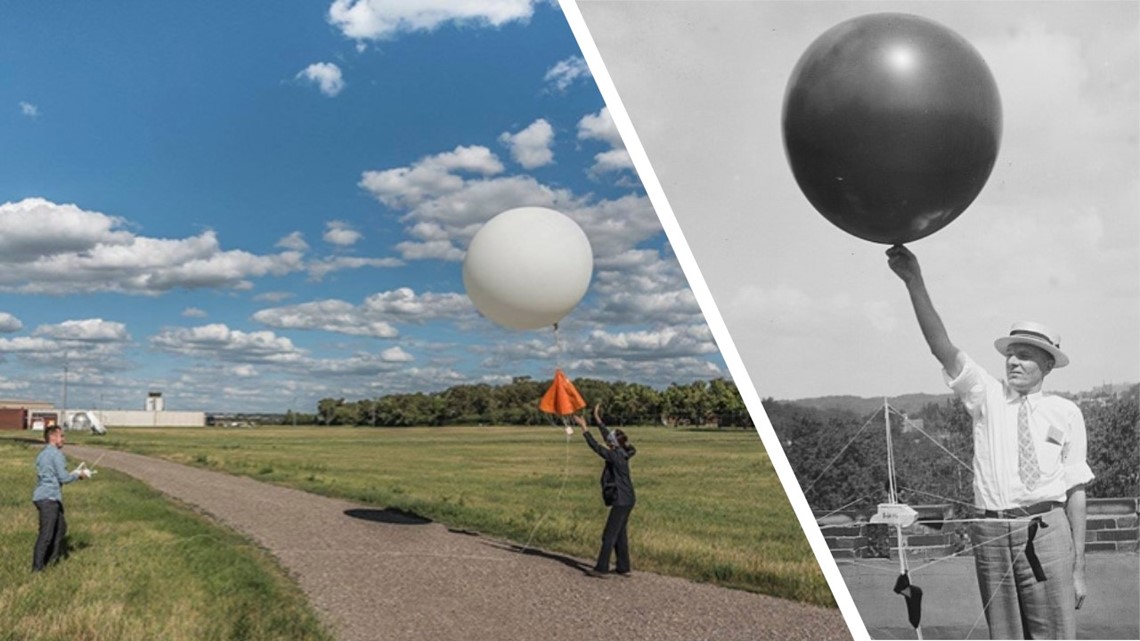
What do you need before a weather balloon launch?
There are five key items for the launch itself:
Balloon
Nozzle with a hydrogen/helium feeding line
Parachute
String or twine
Radiosonde
Weather balloons are approximately 5 feet in diameter and typically made of latex. There is a special powder that covers its surface, which helps the balloon resist premature popping. For this reason, humans cannot handle the balloons due to the oil on our hands. Instead, they use a black plastic bag or gloves to prevent contamination.
The nozzle feeds hydrogen or helium into the balloon. Different locations use different gases. For example, hydrogen is lighter and thus more efficient and cheaper. However, hydrogen is flammable. The National Weather Service upper-air site in Tallahassee, Florida is located on the campus of Florida State University. Due to its location, they use helium because it’s much safer.
The amount of gas put into the balloon depends on the forecaster and their meteorological knowledge. They have to consider things like moisture or ice on a wet day. They may add more gas to overcome the moisture collection on the balloon as it rises. On days where there’s extra lift or an inversion in the atmosphere, less gas is needed given the atmospheric airflow pushing upward.
The radiosonde device is attached at the bottom and is arguably the most important feature. This device captures data that is transmitted back to forecasters in real-time. It measures temperature, pressure, and humidity every second of the flight. It's also tracked via GPS allowing wind speed and direction to be measured.
Since the balloon's path through the air is unpredictable and uncontrolled, air traffic control towers at airports are often notified of a pending launch.

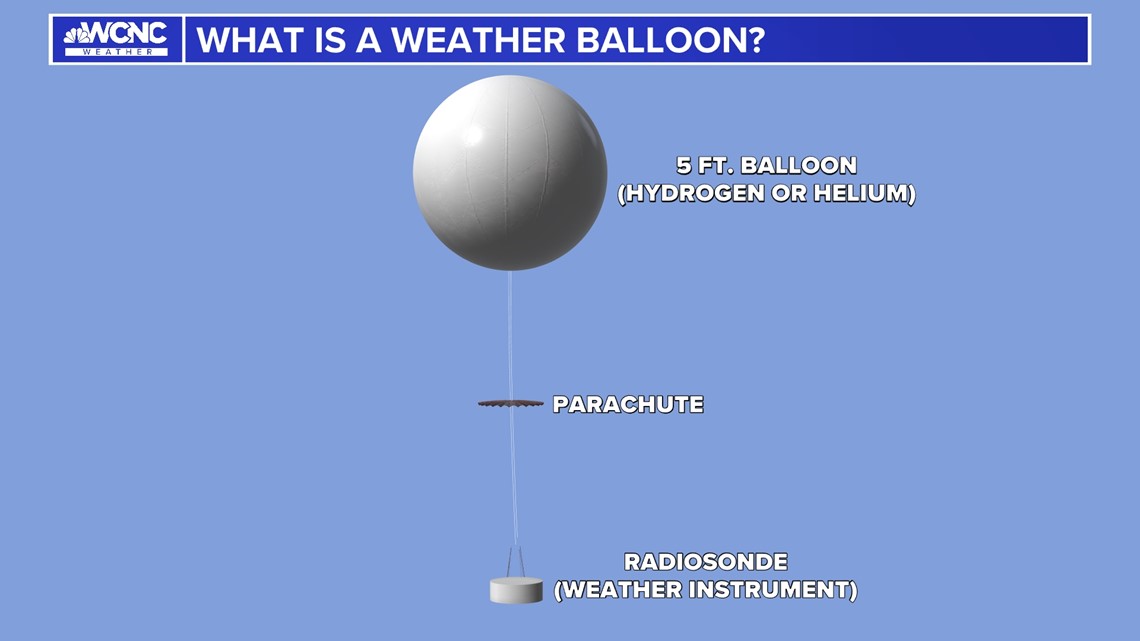
Why are radiosondes so important?
Radiosonde instruments are imperative to these weather balloon launches, but historically, only about 10% are returned to the National Weather Service offices. They are labeled by the NWS before launching and there is even return postage if you ever find one. It costs NWS a lot of money to purchase new ones. Forecasters would rather recalibrate and reuse an old one before purchasing a new one.
Oftentimes, especially on the East Coast, the instrument is blown out to sea. Other times, they’ll land in trees. With any luck, the radiosonde will fall to the ground in the fall when the leaves fall from the tree.

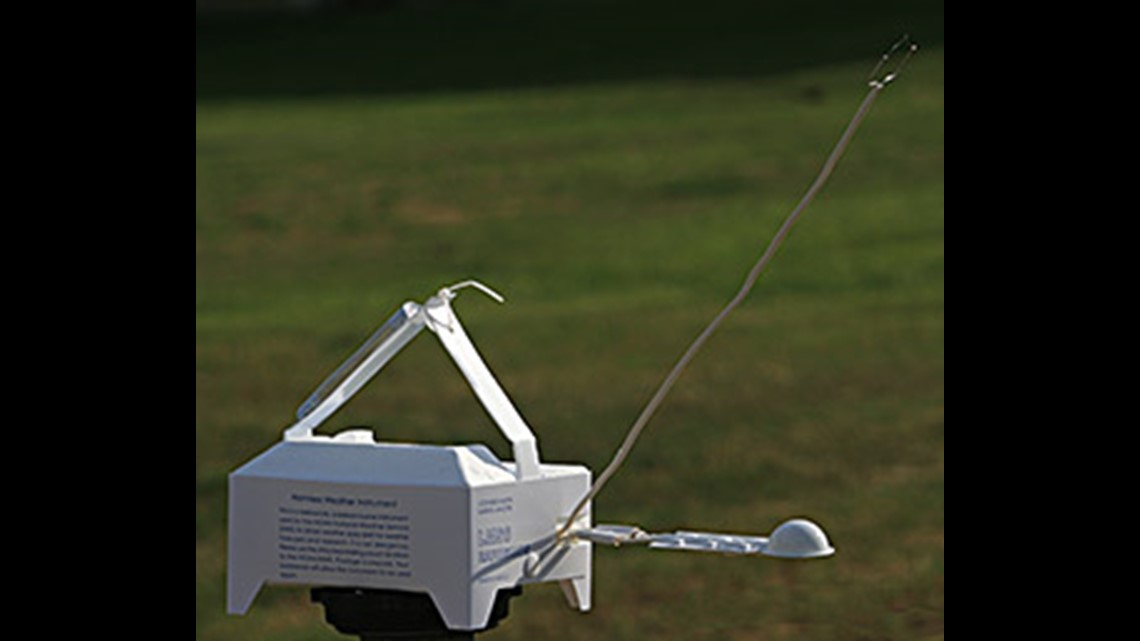
Some balloons have traveled upwards of 100 miles away from their launch location. Trisha Palmer told WCNC Charlotte about one weather balloon that traveled from Birmingham, Alabama to Peachtree City, Georgia, which is located outside Atlanta. That balloon traveled about 150 miles away.
Although these launches happen every day, seeing a weather balloon can be rare and residents are often concerned when they witness a launch or descent. Palmer said they make sure to explain this phenomenon to children during school talks.
“We tell them: If grandma finds this, it is not a bomb,” she said. “You don’t have to call the fire department or police department.”
Weather balloons are occasionally mistaken for alien spacecraft.

